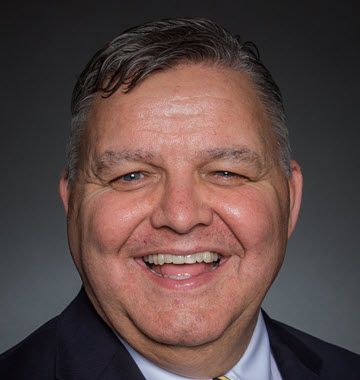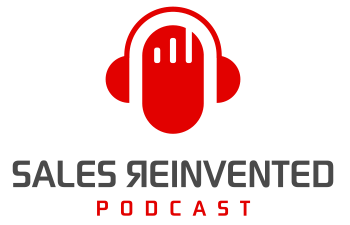Episode 329: Rob Stenberg

Meet
Rob Stenberg
Rob Stenberg has been in the leadership and sales enablement profession for many years and is the Co-Founder of Storyseekers.us. He teaches leadership principles, communication, storytelling and connective listening to companies and individuals interested in increasing their ability to influence, engage, lead and sell. His passion is adding value to others so they can reach the goals they set for themselves.
Our Mission Is To Change The Negative Perception Of Sales People
Our Vision Is A World Where Selling Is A Profession To Be Proud Of
Rob Stenberg likes to say, “The shortest distance between two people is a story.” And if you’re looking to make an emotional connection, being able to tell a succinct story is a critical sales skill. Some people are more intuitive storytellers. But just like any other skill, you can learn how to tell stories. It takes time and practice and training to gain mastery. Rob shares some of his strategies to craft compelling stories in this episode of Sales Reinvented!
Outline of This Episode
- [0:57] Why storytelling is an important skill to have
- [1:30] Can you learn how to be a great storyteller?
- [2:05] The ingredients of a great story that sells
- [3:10] The attributes of a great storyteller
- [3:56] Resources to improve storytelling abilities
- [4:56] Rob’s top 3 storytelling dos and don’ts
- [6:57] How to shorten a story to 60–90 seconds
- [8:06] Why sales leaders need an “I am human” story
The ingredients of a great story that sells
Rob notes that you need to set the stage where you introduce the hero of the story. Then there needs to be a complication or challenge—what’s wrong that you’re trying to overcome? Then there needs to be a turning point where the hero of the story has an “aha moment” and sees a new way of doing things. The final segment is the resolution—what were the end results?
Rob’s top 3 storytelling dos and don’ts
What else can you do to make your story stand out? Follow Rob’s dos and don’ts:
- Make sure you add emotion to your story. If you don’t, it will flatline.
- Make your story brief, 60–90 seconds maximum.
- Once you’ve told your story, listen. Pass the torch to your client.
- Don’t only give facts. Facts tell, stories sell.
- Don’t tell a story that doesn’t have a point.
- Don’t tell a story that the person you’re talking to can’t relate to.
But if you struggle to be brief, how do you tell a short story?
How to shorten a story to 60–90 seconds
In Rob’s workshops, he teaches salespeople to put the ingredients of a story on color-coded cards. Each card is allowed two bullet points of talking points:
- The setting of the story is a green card
- The complication is a white card
- The turning point is a blue card
- The resolution is a red card
If you look at your cards and follow those talking points, you can keep a story within 60–90 seconds. Abraham Lincoln gave the Gettysburg Address in two minutes and two seconds. If he can do that, salespeople can get their stories down to a minute.
Why sales leaders need an “I am human” story
Salespeople can be intimidated by sales leadership. Rob was teaching a workshop when the VP of Sales asked to speak briefly at the beginning of Rob’s presentation. The VP proceeded to tell his sales team that they were doing a terrible job.
Rob was mortified. If he was part of the sales team, he’d be looking for a new job. But the VP of Sales spoke again after lunch. When he did, this is what he said:
“I grew up very poor. I was the youngest of three kids. I didn’t wear a piece of brand-new clothing until I was 16 years old. I vowed that I was never ever going to live like that again. I also vowed that nobody that works with me is ever going to live like that and ever be poor like that. That’s why I ask so much of you, and I just wanted you to know that.”
Rob would walk through fire for that guy. If you’re a sales leader, make sure you have an “I am human story,” a “vision story,” and a “customer hero story.”
Everyone has a story. So you have to ask good questions to get that person’s story. Rob thought this man was a jerk. When he learned his “why” he saw him in a different light.
Resources & People Mentioned
- What Great Salespeople Do by Mike Bosworth
Connect with Rob Stenberg
Connect on LinkedIn
Connect With Paul Watts
Audio Production and Show notes by
PODCAST FAST TRACK
https://www.podcastfasttrack.com
Learn More About Rob Stenberg
Are there any books on or including Storytelling that you recommend? What Great Salespeople Do – the Science of Selling Through Emotional Connection and the Power of Story – Mike Bosworth
In the field of Business Story Telling – Who do you most admire and why? Mike Bosworth has been someone that I think has done a great job of business storytelling. He is known for teaching engineers how to become great salespeople! How many people can say that? He has been a mentor of mine for the past six or so years.
Are there any aspects of your own Story Telling skills that you are working on improving at the moment? Yes, story listening! Active listening is the key to great storytelling. That is why I am a “Story Seeker.” The most common complaint you hear about salespeople is “they don’t listen!” I want to make sure that I don’t ever hear this said about me!
Hobbies, Interests? Love reading, golf, anything outdoors and spending time with my family.
How can our listeners contact with you? rob.stenberg(at)storyseekers.us, www.storyseekers.us, 218-391-4156 and LinkedIn
Share This Episode, Choose Your Platform!
